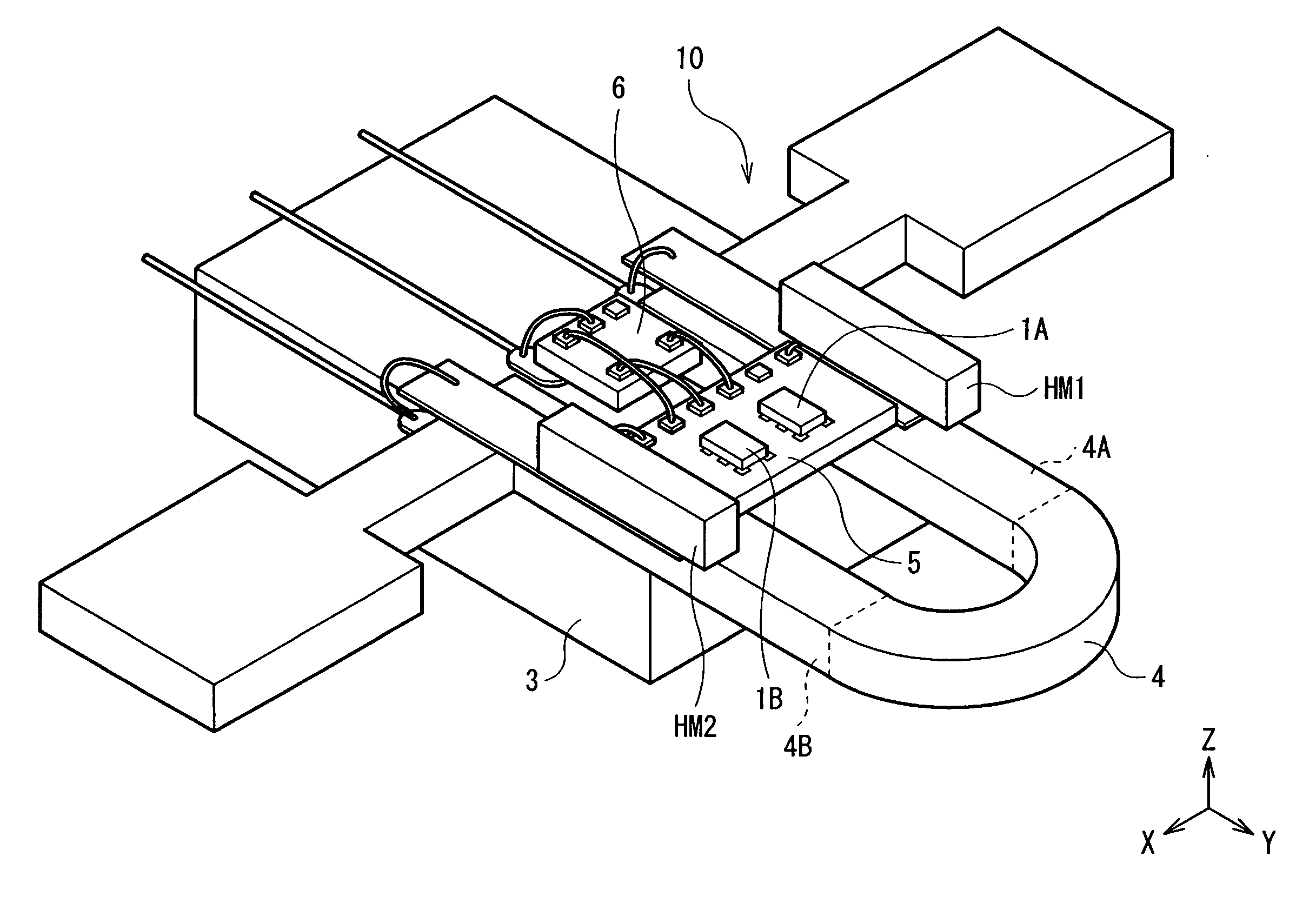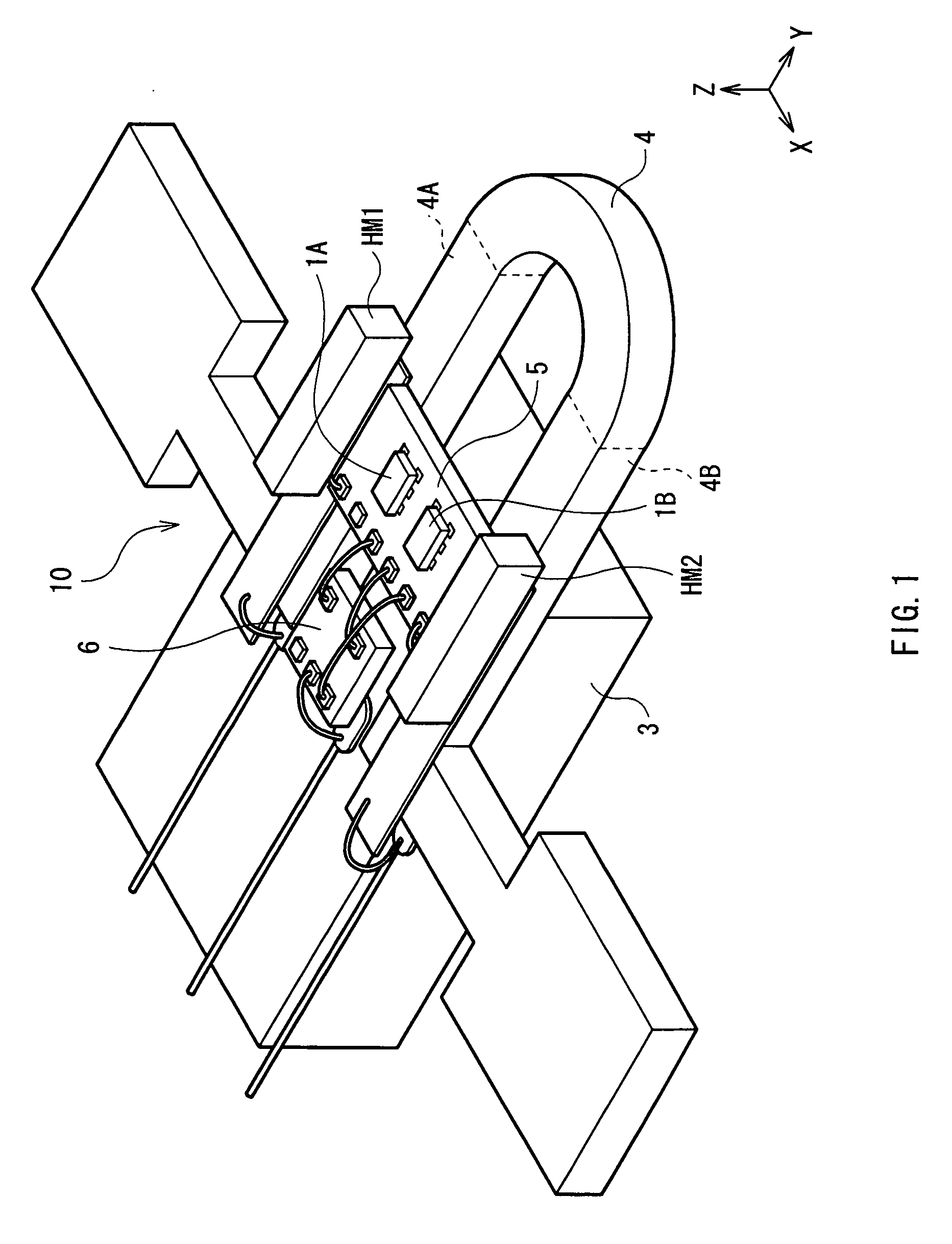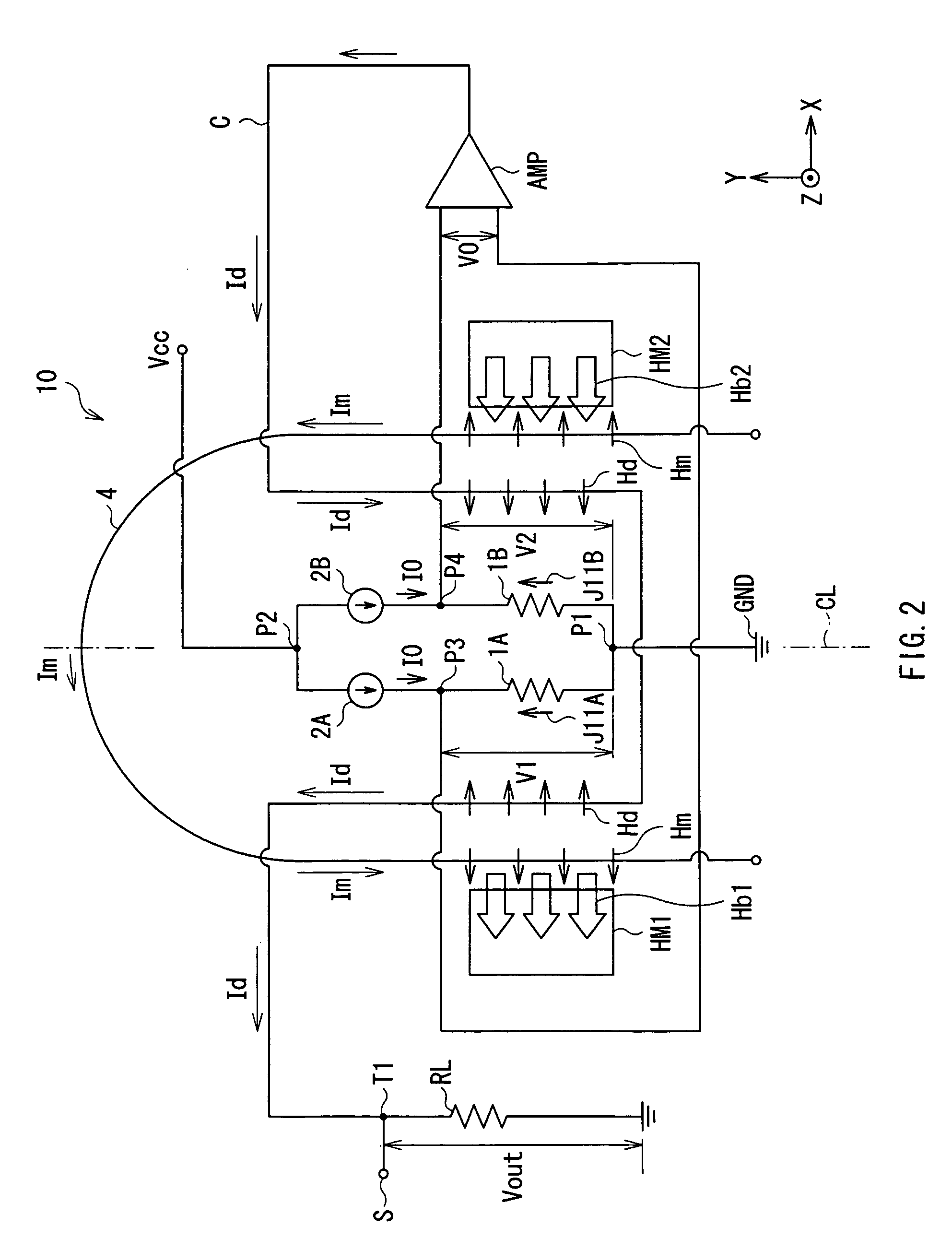Current sensor
a current sensor and current sensor technology, applied in the direction of magnetic measurement, dynamo-electric motor meters, instruments, etc., can solve the problem of difficult adjustment of the balance of the four magnetoresistive elements, and achieve the effect of easy adjustment of the offset value at a zero magnetic field, high sensitivity and high precision
- Summary
- Abstract
- Description
- Claims
- Application Information
AI Technical Summary
Benefits of technology
Problems solved by technology
Method used
Image
Examples
Embodiment Construction
[0024] An embodiment of the invention will be described in detail hereinbelow with reference to the drawings.
[0025] First, the configuration of a current sensor as an embodiment of the invention will be described with reference to FIGS. 1 and 2. FIG. 1 is a schematic view illustrating a perspective configuration of a current sensor 10 according to the embodiment. FIG. 2 shows a circuit configuration of the current sensor 10 illustrated in FIG. 1. All of arrows of a current Im to be detected, a compensating current Id, a current magnetic field Hm, a compensating current magnetic field Hd, bias magnetic fields Hb1 and Hb2, and a current I0 (all described later) show directions relative to first and second magnetoresistive elements.
[0026] The current sensor 10 is an ammeter for measuring the current Im to be detected supplied to a conductor 4 formed on a substrate 3, and has the first and second magnetoresistive elements 1A and 1B connected to each other at a first connection point P...
PUM
 Login to View More
Login to View More Abstract
Description
Claims
Application Information
 Login to View More
Login to View More - R&D
- Intellectual Property
- Life Sciences
- Materials
- Tech Scout
- Unparalleled Data Quality
- Higher Quality Content
- 60% Fewer Hallucinations
Browse by: Latest US Patents, China's latest patents, Technical Efficacy Thesaurus, Application Domain, Technology Topic, Popular Technical Reports.
© 2025 PatSnap. All rights reserved.Legal|Privacy policy|Modern Slavery Act Transparency Statement|Sitemap|About US| Contact US: help@patsnap.com



